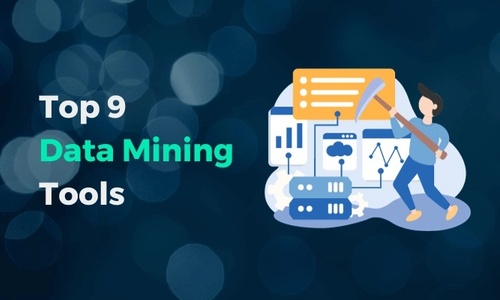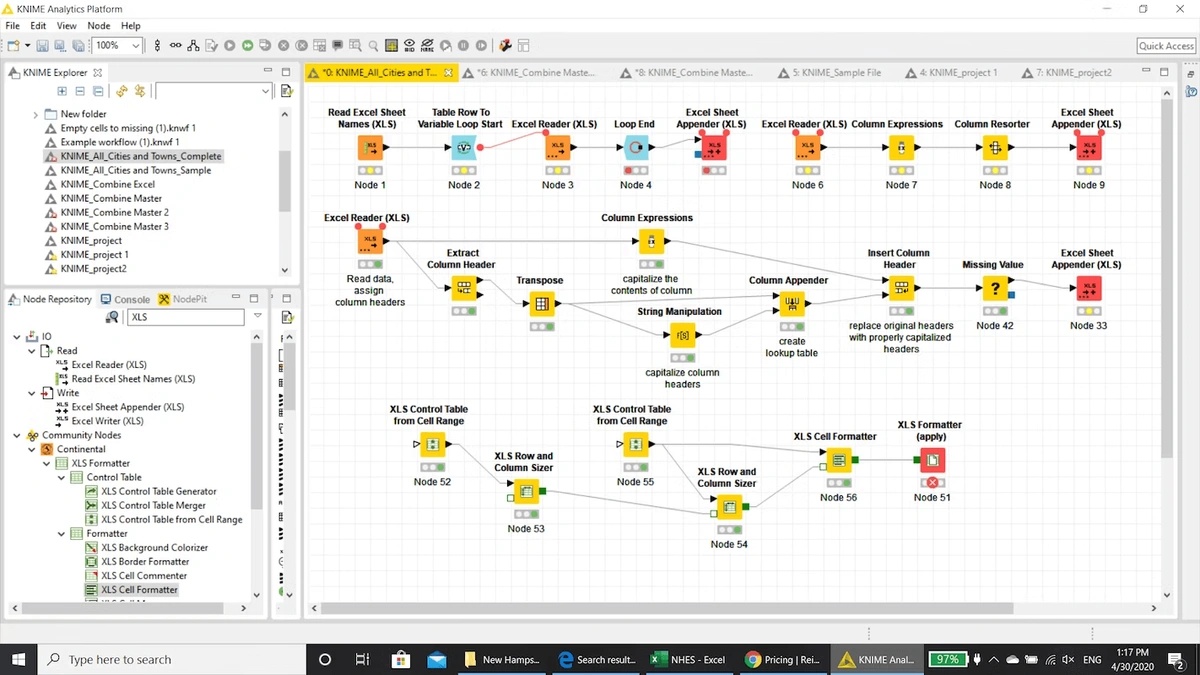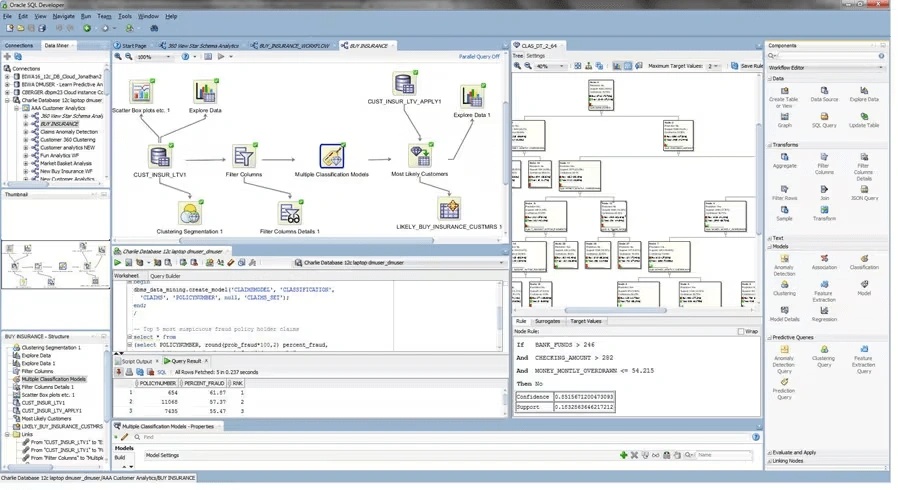An overwhelming amount of data is generated daily (we're talking quintillions of bytes). For businesses, the amount of raw data coming in each day makes uncovering insights a challenge.
Luckily, data mining gives your organization the ability to dig past what's raw to uncover patterns in your data sets. These patterns can result in business insights that help you make more informed decisions.
Data mining tools simplify this process. They're particularly useful for teams that feature both data scientists and less-technical players, as most tools use AI and complex algorithms to automate and streamline the data mining and analysis process.
If your organization is interested in making sense of your data by taking advantage of this innovative type of analytics technology, check out our list of the 10 best data mining tools below.
But before we get started, here are five things you should know about data mining:
- Data mining tools enable users to identify deeper patterns and trends in data they might have otherwise missed.
- Data mining can be used to analyze a variety of data types, including data from social media and customer service interactions.
- Data mining tools can support data lifecycle management, from data collection and cleaning to data visualization and interpretation.
- Data mining tools go deeper than other data analytics tools, helping users derive more detailed and unique insights.
- Some of the top data mining tools include RapidMiner, KNIME, Orange, SAS Enterprise Miner, Oracle Data Miner, Qlik Sense, Apache Mahout, Teradata, and MonkeyLearn.
What Are Data Mining Tools?
Data mining tools are data platforms used for "mining" raw data. These tools help users collect, prepare, analyze, interpret, and report on in-depth data insights.
Because of the complex algorithms, statistical methods, and other techniques these platforms use to manage the data mining lifecycle, data mining tools are often able to discover and explain patterns, relationships, and other data details that most platforms can't identify.
How to Evaluate Data Mining Tools
A number of decision-making factors are important when selecting a data mining tool for your business. Let's dive into the three most important elements to consider.
Compatibility With Different Data Types
Data mining tools should help you collect data and identify useful insights from a variety of sources. That's why it's important to select a data mining tool that can handle big data, both structured and unstructured data, and industry-specific data sources.
Depending on your business and data analytics goals, you'll want to look for a solution that works with generative AI and AI model data, IoT and sensor data, or social media and customer interaction data. Most data mining tools rely on third-party integrations and connectors to ease the data collection process across different sources.
User Experience
Data mining tools complete complex analytics tasks on behalf of both data scientists and non-data scientists. To meet the needs of less-technical employees, data mining tools need to put ease of use and the overall user experience first.
The best data mining tools offer features like low-code/no-code functionality, drag-and-drop configurability, automation, and customizable data visualizations to improve the user experience.
Scalability
Organizations of all sizes require data mining technology that can scale as data analysis projects and requirements grow. To find a data mining solution that works for your current and future business, look for a platform that supports multiple algorithms and techniques and offers extensive configurability.
You'll also want a solution that can process high volumes of data at high speeds, whether that's through parallel processing, distributed computing, or a combination of high-speed processing methods. It's also a good idea to find a solution that integrates with your most-used business applications.
Prepare Your Data for Data Mining
To make the most of data mining tools, you need access to high-quality data from diverse sources. This is where Integrate.io, a data integration platform, plays a crucial role. Integrate.io seamlessly extracts data from siloed sources and loads it into other business applications, such as Salesforce, through its extensive library of connectors.
While Integrate.io isn't a data mining tool per se, it equips you with essential features to ready your data for mining:
- Data Extraction, Transformation, and Loading (ETL): Integrate.io is adept at pulling data from multiple sources such as databases, SaaS platforms, and cloud storage. It then refines this data by transforming its format and structure to fit data mining requirements, cleaning out errors, inconsistencies, and redundancies. The platform then channels this refined data into versatile data warehouses and lakes, which are the primary platforms for data mining. Integrate.io pricing is tailored exactly to each client's needs and requirements with a usage-based component couple with features and functionality. Clients choose which level of platform usage they will require and then which features and functionality to create a custom plan to fit their use case.
Key Features of Integrate.io:
- Intuitive no-code ETL, reverse ETL, and simplified data aggregation.
- Advanced ELT and Change Data Capture (CDC) equipped with specialized connectors, automated pipelines, and customization options.
- Proactive data observability monitoring, and automated alerts tailored to your preferences.
- DWH insights for data warehouse optimization
- Comprehensive connectors, compatible with numerous BI, database, cloud, analytics, e-commerce, marketing, and sales platforms.
With your data primed and integrated, you're all set to leverage a dedicated data mining tool to glean meaningful insights. Some popular data mining tools include:
Top Data Mining Tools
1. RapidMiner
Rating: 4.6/5 (G2)
Key Features:
- Visual, drag-and-drop analytics workflows
- Text mining and sentiment analysis for unstructured data insights
- Access to low-code and code-based data science features
- Integrated JupyterLab environment
- Administrative controls and data encryption
RapidMiner is an enterprise-level data mining and data science platform that's designed to support model building, data engineering, data governance, and MLOps user requirements. It's a particularly strong solution for text mining, as it's able to do sentiment analysis for unstructured data from a variety of sources.
Most enterprise buyers will need to contact RapidMiner directly for pricing information; however, RapidMiner Studio Free is a free version that is available for instructional, research, and other limited-use-case purposes.
2. KNIME Analytics Platform
Rating: 4.3/5 (G2)
Key Features:
- Compatible with all file formats
- Spreadsheet and data task automation
- Workflow segment bundling
- Python, R, and JavaScript scripting integrations
- Access to the KNIME Community Hub repository
KNIME Analytics Platform is a free and open-source data analytics and data mining solution. Many of its users select KNIME not only for its affordability but for its extensive functionality, with more than 300 data source connectors, user-friendly visualizations, and a helpful AutoML component.
KNIME is free for individual users. There are other plans you can pay for, depending on your needs. For pricing information, you'll need to contact the sales team.
3. Orange
Rating: 4.1/5 (G2)
Key Features:
- Attribute ranking and selections
- Education-driven widgets for hands-on training
- Add-ons for external data mining, natural language processing, text mining, and other tasks
- Native support for .xlsx, .csv, .tab, Google Spreadsheet, PostgreSQL, and MSSQL data formats
- Python-based solution
Orange is another free, open-source data mining solution that democratizes machine learning and data visualization capabilities for a larger pool of users. It offers a variety of data visualization and workflow options that users can adjust to their particular needs, though the tool is primarily designed to work with Python scripting and certain data formats.
Orange's YouTube channel and additional resources help educators and self-learners alike train in basic data analysis and management skills. However, this tool has several limitations that may not make it a great fit for enterprise use cases.
4. SAS Enterprise Miner
Rating: 4.4/5 (G2)
Key Features:
- Self-documentation
- Detailed data mining process maps
- Advanced and varied predictive modeling techniques
- Visual assessment and validation KPIs and metrics
- Close integration with SAS Viya technology
SAS Enterprise Miner is a purpose-built data mining solution that natively integrates with other SAS solutions, such as SAS Viya, the AI and analytics platform. The platform comes with a diverse range of data preparation and exploration tools, as well as features like parallel processing, grid computing, and server-based processing and storage for scalability.
Pricing information for SAS Enterprise Miner is available only upon request. Prospective buyers should note that free trials and demos are available, and special pricing may be available for student users.
5. Oracle Data Miner
Rating: 4.4/5.0 (Capterra)
Key Features:
- ODMr tool palette nodes
- Open-source R integration for data-parallel and task-parallel execution
- Compatible with Oracle Database, Spark, and Hadoop data sources
- Drag-and-drop functionality
- Model Build node for automated building of multiple machine learning models
Oracle Data Miner is an extension to Oracle SQL Developer that supports in-depth data analysis, data mining, and other data tasks with a focus on usability for the "citizen data scientist." It works to balance ease of use with enterprise-level features by offering third-party and Oracle integrations, a drag-and-drop user interface, and both built-in and automated algorithms and workflows.
Oracle Data Miner is a free extension for Oracle SQL Developer users and can't be used on its own. Oracle SQL Developer is a free integrated development environment that will need to be downloaded before users can take advantage of Data Miner's features.
6. Qlik Sense
Rating: 4.5/5 (G2)
Key Features:
- Associative analytics engine
- AI-assisted data preparation and AI-generated insights
- AutoML and predictive analytics
- Real-time data pipeline
- Interactive dashboards and self-service visualizations
Qlik Sense is a cloud analytics platform with many AI and ML-powered features that support enterprise data mining requirements. Users have the option to add notes, conversational threads, and other contextual information directly to analytics, and a self-service data catalog offers detailed information about data statuses and sources.
As for pricing, Qlik Standard starts at $20 per user/month when billed annually. Two other options exist, including Premium and Enterprise.
7. Apache Mahout
Rating: 4.2/5 (G2)
Key Features:
- Java and Scala programming languages
- MapReduce and Spark for big data processing
- Extensible library for customization
- Integrations with HDFS, HBase, and other Hadoop components
- Open-source software with community support resources
Apache Mahout is a project from the Apache Software Foundation, built on top of Apache Hadoop, that is designed for data scientists, mathematicians, and statisticians who want to build their own algorithms with framework support. Users primarily select Mahout for data classification, clustering, recommendation, and pattern mining tasks.
Apache Mahout is a free, open-source solution that can be downloaded through Quickstart or its GitHub repository. Apache provides a number of getting-started and user guides to help new users download Mahout and prepare their data.
8. Teradata VantageCloud
Rating: 4.2/5 (G2)
Key Features:
- Integrates with other ETL tools like Integrate.io
- Data fabric and object storage
- ClearScape analytics access
- Multiple-cluster sizing
- Cloud, hybrid, and on-premises deployment options
Teradata VantageCloud is a cloud analytics and data platform that emphasizes compatibility with various cloud and data storage environments, including the three biggest managed cloud providers and a variety of data warehouses, lakehouses, and lakes. It's a top enterprise solution for data mining because of its extensive integration capabilities and scalability.
VantageCloud Lake pricing starts at $4,800 per month, and VantageCloud Enterprise pricing starts at $9,000 per month.
9. MonkeyLearn
Rating: 4/5 (G2)
Key Features:
- Sentiment analyzer tool
- Data cleaning and labeling
- Customizable charts, filters, and data visualizations
- Pre-built and custom machine learning models
- Business templates for text analytics
MonkeyLearn is a no-code text analytics and mining solution that focuses on customer data analytics. Users can get deeper insights on everything from net promoter scores to customer surveys to customer support sentiments with the help of text classifiers and extractors.
MonkeyLearn does not transparently advertise its pricing, so interested buyers will need to contact the vendor directly. However, certain tools, like MonkeyLearn's sentiment analyzer, can be tested for free.
Discover Business-Changing Insights With Integrate.io
Integrate.io can be used in conjunction with these data mining tools to create a comprehensive data mining pipeline. For example, you can use Integrate.io to extract data from your CRM system, transform it into the required format, and load it into a data warehouse. Then, you can use a data mining tool to analyze the data and identify trends and patterns.
Overall, Integrate.io is a valuable tool for businesses that need to prepare data for data mining. It can help you save time and resources by automating the data integration process.
Pricing for Integrate.io depends on which product(s) your organization needs. For example, pricing starts at $15,000 per year for ETL and Reverse ETL, while the Data Observability and DWH Insights Essentials subscriptions are free.
Interested in trying it out? Get started with a 14-day free trial of the product or schedule a free demo today to learn more.
Data Mining FAQs
What Is Data Mining?
Data mining is an in-depth analytical process that relies on machine learning, advanced algorithms, statistical modeling, and other techniques to find deeper patterns, correlations, and subtextual meaning in existing datasets.
How Is the Data Mining Process Completed?
The data mining process is completed through a cyclical process that starts with data collection and then moves through data cleaning and preparation, occasional data extraction and transformation, data analysis, algorithmic data discovery and modeling, and model evaluation and interpretation.
What Are Patterns and Models in Data Mining?
Patterns are the identifiable relationships and trends in a dataset, while models are what's used in data mining to frame those patterns with context. Examples of patterns include associations, sequences, clusters, and classifications; examples of models include classification, predictive, and regression models.



























